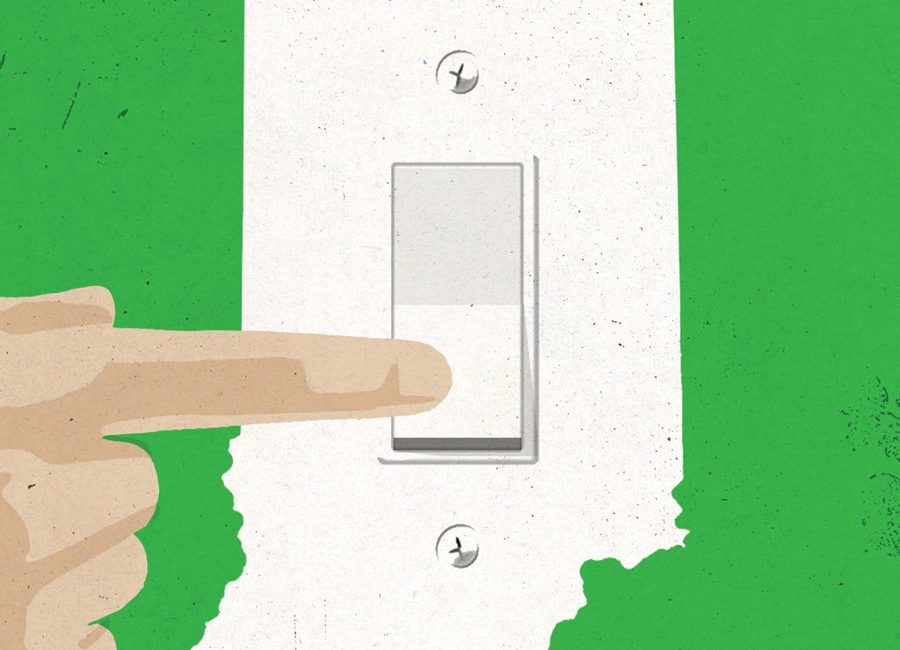
Politics: Power Plays Behind Clean Energy This Session
Overshadowed by same-sex-marriage court battles and the Governor Pence–Glenda Ritz fight card, one critical policy change went comparatively unnoticed last year: Indiana became the first state to enact an energy-savings plan and then slash it. And the debate over how our energy is regulated is just getting started.
Mitch Daniels’s Energizing Indiana plan took effect in 2012 as a third-party administrator of the state’s energy regulation. Funded by an extra $2 on each Hoosier household’s utility bill, the program employed about 350 people here and set a goal for Indiana to cut 2 percent of its energy use, incrementally, by 2019. At first, making progress was easy: EI consultants visited homeowners and businesses and educated them on energy-efficiency habits, like wrapping pipes and switching to CFL lightbulbs. But lawmakers worried about how citizens and companies could keep cutting after they had exhausted the cheap fixes. Senator Jim Merritt of Indianapolis estimated that the program would end up costing double what it did in the beginning, so he authored SEA 340 last session to let big manufacturers opt out of it. By the time the House revised the bill, it pulled the plug on EI entirely. Governor Pence declined to sign or veto it and vowed to revisit the issue this year.
Indiana became the first state to enact an energy-savings plan and then slash it.
Environmentalists believed lawmakers who opposed EI were bending to pressure from utility companies, and they didn’t feel any better when Merritt’s new bill, SB 412, passed the Senate’s Utilities Committee in January. The measure allowed large utility companies to self-regulate by enacting their own energy-efficiency plans. Lower output means less revenue, and SB 412 let the utilities recoup resulting losses—from ratepayers, opponents say—plus charge them for the plans’ other costs and ask the government for incentives. Kerwin Olson, executive director of Indiana’s Citizens Action Coalition, one of the more vocal groups supporting clean energy, says so many allowances are unprecedented nationally. “It’s a total ripoff,” he says.
An amended version of SB 412 is expected to make its way to the House this month. Meanwhile, environmentalists are keeping their eyes on another new bill, HB 1320, which would roll back incentives for solar energy. Together, the proposed legislation and Indiana’s plummeting energy rating (it’s dropping faster than any other state’s) are casting a shadow on last year’s closing of IPL’s Harding Street coal plant, which counted as a major win for clean-energy advocates. The balance of power might tip again soon.





